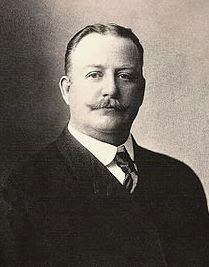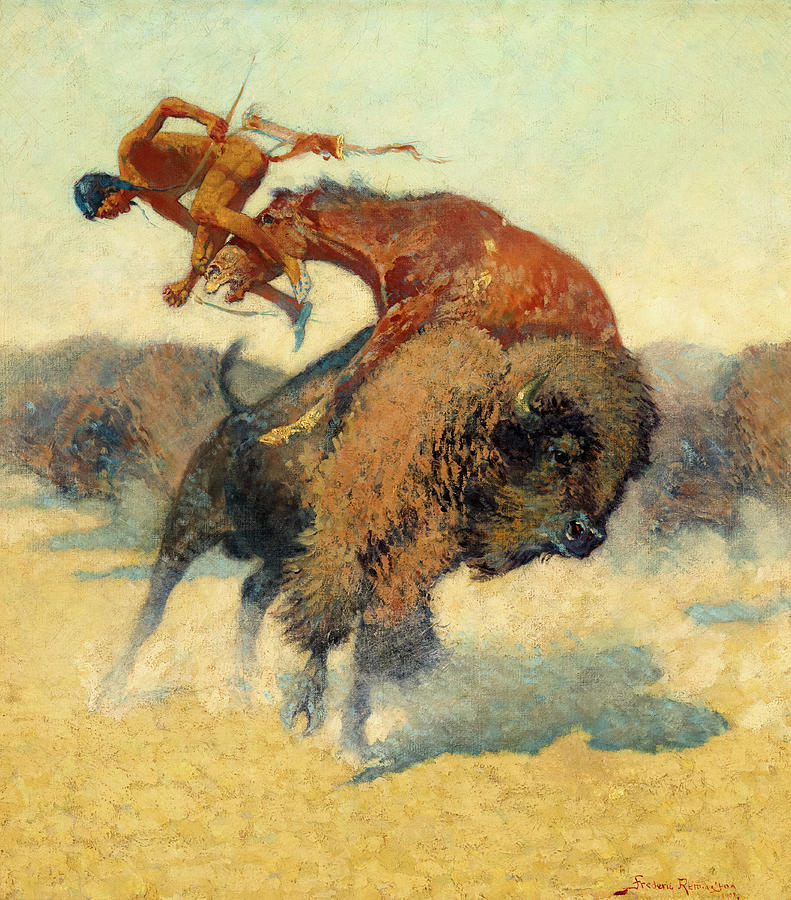


Through the 1890s, Remington traveled around the U.S., Mexico, and abroad to gather ideas for articles and illustrations. During this time, he would create "The Parley" (1898), "Self-Portrait on a Horse" (1890), "His Last Stand" (1890), and "A Cavalryman's Breakfast on the Plains" (1892). In the late 1880s and into the 1890s, Remington would spend time at the Native American battle sites, depicting scenes from the battles. In 1889, Remington won a second-class medal at the Paris Exposition, and in 1890, Remington had his first one-man show, where he presented twenty-one paintings at the American Art Galleries. In 1887, Remington received a commission to do eighty-three illustrations for a book by Theodore Roosevelt, "Ranch Life and the Hunting Trail". For commercial reproduction in black-and-white, he produced ink and wash drawings. Remington continued to work for publications and as such, his commercial career became well established. Other famous bronzes created by Remington include " The Outlaw", " The Sergeant", and " The Savage", among many others. Remington had a plaster cast made of the sculpture, then bronze copies, which were sold at the retailer Tiffany's. Remington did not consider himself a sculptor, but with the help of a friend, he began creating. In 1895, Remington created arguably, his most well-known sculpture, " The Broncho Buster". His work was regarded as depicting swift, dynamic action and accuracy of detail. Remington would record the image of what he had seen. During the Spanish-American War, falling back on his experience working for his uncle as a reporter, Remington was a war correspondent and artist. Remington also published books and articles, which served mainly as vehicles for his illustrations, as did his reporting work. During the 1880s and ’90s many of Remington’s illustrations were printed in popular magazines. His first full-page cover under his own name appeared in "Harper's Weekly" on January 9, 1886, when he was twenty-five. Remington submitted illustrations, sketches, and other works for publication with Western themes to "Collier's" and "Harper's Weekly". He soon started to sell to locals, and with that, his career as an artist began to gain traction.

Frederic remington series#
After a series of negative life events, Remington started to sketch and paint in earnest and bartered his sketches for essentials. He had been sketching by this point and continued to do so after selling the ranch. In 1883, Remington went to rural Kansas and invested in a ranch, which he found difficult and sold a year later. Remington experienced an authentic view of the American West, setting him apart from other artists.
Frederic remington free#
This trip, although not immediately fruitful professionally, would give Remington a firsthand glimpse of things he had only imagined – free roaming cattle and bison, vast open prairies, and the last major confrontations between the American cavalry and Native Americans. He initially went to buy a cattle operation, and then a mining interest, but unfortunately, he did not have sufficient capital for either business venture. In 1881, at age nineteen, Remington made his first trip west, going to Montana. Remington refused to go back to art school and instead spent time in the great outdoors. He left Yale in 1879 to tend to his ailing father, who died a year later. He then attended Yale University art school, studying under artist John Henry Niemeyer. Remington attended military school but was not deemed soldier material. With such a storied lineage, it is no wonder that Remington began to make drawings and sketches of soldiers and cowboys at an early age. Remington's ancestors purportedly fought in the French and Indian War, the American Revolution, the War of 1812 and the American Civil War. Through the Warner side of his family, Remington was related to America’s first president, General George Washington. Bascom and was a cousin to Eliphalet Remington, founder of the Remington Arms Company, one of America's oldest gunmakers. Remington was blood-related to Indian portrait artist George Catlin and cowboy sculptor Earl W. One of his great-grandfathers, Samuel Bascom, was a saddle maker by trade. His father had been a Union army officer during the Civil War. Remington’s American and “Western” roots ran deep.

His artwork is recognizable for featuring images of cowboys, American Indians, and the U.S. Remington was an American painter, illustrator, and sculptor who is best known for his depictions of the “American West” from the last quarter of the 19th century. Frederic Sackrider Remington was born on October 4, 1861.


 0 kommentar(er)
0 kommentar(er)
